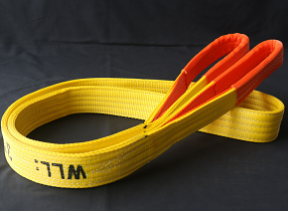Different specifications of lifting belt are different rated load, in the face of different weight lifting target we should choose the corresponding specifications of lifting belt, but in some cases will inevitably appear lifting target and lifting belt mismatch.

If the rated load of the lifting belt is far greater than the dead weight of the lifting target, it can be safe and bold to use the lifting belt for lifting operation. If the rated load of the lifting belt is insufficient, never try to overload lifting. How should we choose when there is no larger lifting belt?
Someone put forward such an idea: can two lifting belts with a rated load of 10 tons be used together to lift heavy objects with a dead weight of 15 to 20 tons? If we understand from a mathematical point of view, two lifting belts with a rated load of 10 tons do have a carrying capacity of 20 tons. But it's actually dangerous, and there's a very simple reason why.
Lifting belt in the process of production does not ensure that all hoisting belt length perfectly, because they are allowed to have a specified range of error, the error is inevitable, if two hoisting belt and error and use together, probably shorter hoisting belt bear the weight of all lifting target, and longer lifting belt is in a state of relaxation, This situation is bound to appear overweight, which causes the safety accident of fracture fall.
For the sake of safety, it is not recommended to increase the load by using two lifting belts. The most safe and effective way should be to choose a more appropriate lifting belt for operation, so we must make all preparations before lifting operation, so as not to bring inconvenience to work.